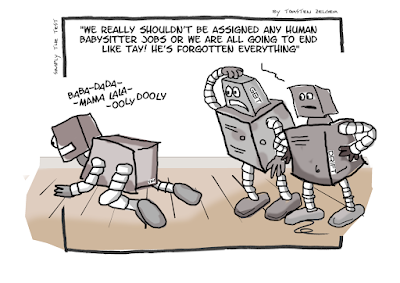When I developed my first "robot" 20 years ago with the goal to automatically test the software so that my team didn't have to do the same manual tests every day, there were at most a handful of products enabling it. There were tools from well-known companies like IBM and Mercury (now HP), and these were extremely expensive. You didn't have much choice. Once you made a decision for a tool, it was almost impossible to revert that decision and go for another. It inevitably resulted in enormous extra costs.
A little later, a few interesting and cheaper alternatives emerged, such as RANOREX, an Austrian company that soon taught the big ones to fear because of their quality and an attractive value for money.
We also experimented with other products that we used for specific tasks and later replaced with other newer/better ones. Among these, I had a Canadian product on my focus which provided us with valuable services when testing a vehicle valuation calculation engine. As far as I know, the product no longer exists today and my memories are patchy, but I believe it was a forerunner of one of the open source systems that are widely used today or it may have been something similar.
20 years later, you will find a flood of even cheaper or free offers. A closer look reveals that most products are based on a few identical core modules. Selenium is currently one of the most popular "engines" on which most tools are based on. I also use Selenium, and because it's actually just an "engine", you have to develop additional methods and modules on top of it to make it a stable and easy to maintain test automation suite.
Nowadays, when building your own framework, most stick to the page-object model. However, we used to have a different approach. Our test data and instructions (action words) were kept in Excel. The idea was to enable testers with no programming skills to write automed tests. At the beginning we even thought, we could convince our business-analyts to maintain their own tests.
The idea to keep data and keywords out of the code was not new. It already existed at the time I was still working with IBM Rational Robot. For example, the SAFS Framework by Carl Nagle [1] was the first framework I learnt about following a similar approach or take TestFrame which is an implementation of Hans Buwalda's so called "Action Words" [2].
Our Excel based framework was quite a success within our headquarters in Switzerland and Germany and our plan to have testers write their own scripts without programming skills went well, but the maintenance of our framework wasn't quite that easy and it needed an expert to maintain all the UI locators and required extensions. This was sometimes a little too tricky for the non-techies. And, we never managed the business analysts to go for it.
Later (in a different company), I used the same approach but realized that it didn't have the same effect if you have testers WITH programming skills. Excel isn't seen cool enough to write automated tests and if you sell such approach to techies, they will raise their eye brows.
So, we removed the Excel part and integrated everything into NUNIT. That was easier to debug also.
And now? A newcomer called Cypress enters the market [3]. As I don't want to get stuck in sweet idleness, we are now starting a new adventure to see what it has to offer. We still keep our Selenium scripts, but they are going into a maintenance mode right now.
But, do we really have to follow each new fashion trend? Who guarantees that new stuff and ideas are really better than what we already have in place?
Fortunately, in my position as QA Manager, I can mostly set the goals myself in this area. If things are going well, you have the dilemma between "don't touch a running system" and ensuring we are not missing something.
Today, we use Selenium/C# with NUNIT for automated UI tests triggered daily by Jenkins. And, we have an automated test suite that fires requests on an interface level (below the UI) following the Test Automation Pyramid approach [4].
The problem: Everything works smooth since years! Why should I spend time to investigate alternatives?
I am thinking here of the Lindy's Law [5]. If something has proven itself for a long time, there is a high probability that it will continue to prove itself in the future. In my case, this applies in particular to these automated API tests, which are based on a framework we developed ourselves with the aim to keep the test scripts at the highest possible level of abstraction. The technical details such as authentication communication with the backend remain hidden. Also, instead of just having JSON based input/output, we are dealing with deserialized business objects.
We have at least 3000 automated tests that have identified bugs that were not caught in the deveoper's unit-tests. Simply said, these interface tests are a success story and I don't spend a second thinking about replacing it with a standard product. Why should we scan the market for "better" stuff that maybe isn't?
Because the examination of alternatives does not necessarily lead to the replacement of a tried and tested system. It can become a supplier of interesting and new ideas and extensions for the existing solution. Being open minded also helps recognizing the limits of one's own system and thus to check whether the current version can last not only in the near, but also far future and/or can be supplemented with one or the other useful feature.
The only constraint I am dealing with in this regard is my available time. But that's another story.
References:
[1] SAFS, Carl Nagle
[2] "Action Words" by Hans Buwalda, Software Test Automation (Fewster/Graham), Addison-Wesley
[3] https://www.testautomatisierung.org/testautomatisierung-cypress-vs-selenium/
[4] Test Automation Pyramid, Fowler, https://martinfowler.com/articles/practical-test-pyramid.html
[5] Lindy's Law by Albert Goldman, 1964, https://www.sciencedirect.com/science/article/abs/pii/S0378437117305964 and "Das Magazin", Nr. 10, 10-11. März 2023









